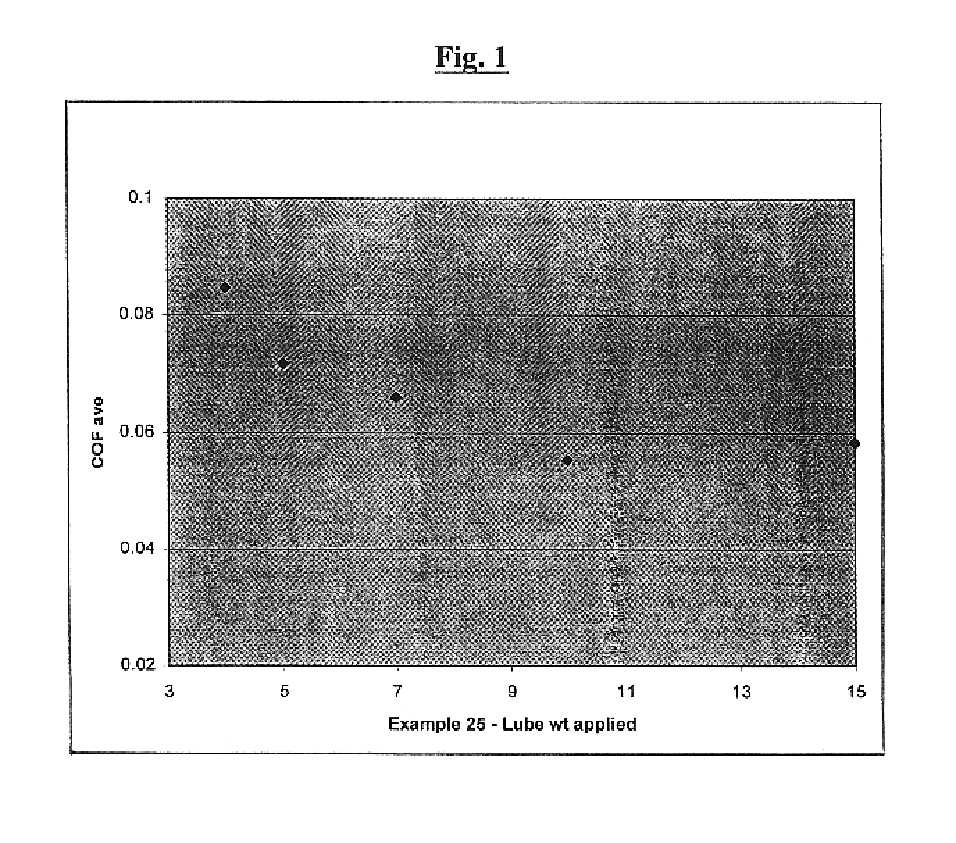Container, such as a food or beverage container, lubrication method
a lubrication method and container technology, applied in the direction of liquid degasification, separation processes, transportation and packaging, etc., can solve the problems of promoting stress cracking of pet bottles, disadvantages of aqueous based lubricants in general, and many currently used aqueous based lubricants
- Summary
- Abstract
- Description
- Claims
- Application Information
AI Technical Summary
Benefits of technology
Problems solved by technology
Method used
Image
Examples
example 1-3
These examples demonstrated that corn oil, a natural oil, possesses lubricities which are better than or comparable to a commercially available aqueous based lube. The cylinder material was mild steel for Example 1, glass for Example 2, and PET for Example 3. The rotating disk was stainless steel for Example 1-3.
example 4-6
These examples demonstrated that Bacchus.TM. 22, a mineral oil, possesses lubricities which are better than the commercially available aqueous based lube. The cylinder material was mild steel for Example 4, glass for Example 5, and PET for example 6. The rotating disk was stainless steel for Example 4-6.
example 7-8
These examples demonstrated that the two synthetic lubricants have a mild steel-on-stainless steel lubricity that is better than or comparable to the commercially available aqueous based lube. The cylinder material was mild and the rotating disk was stainless steel.
PUM
| Property | Measurement | Unit |
|---|---|---|
| height | aaaaa | aaaaa |
| weight percent | aaaaa | aaaaa |
| weight percent | aaaaa | aaaaa |
Abstract
Description
Claims
Application Information
 Login to View More
Login to View More - R&D
- Intellectual Property
- Life Sciences
- Materials
- Tech Scout
- Unparalleled Data Quality
- Higher Quality Content
- 60% Fewer Hallucinations
Browse by: Latest US Patents, China's latest patents, Technical Efficacy Thesaurus, Application Domain, Technology Topic, Popular Technical Reports.
© 2025 PatSnap. All rights reserved.Legal|Privacy policy|Modern Slavery Act Transparency Statement|Sitemap|About US| Contact US: help@patsnap.com

